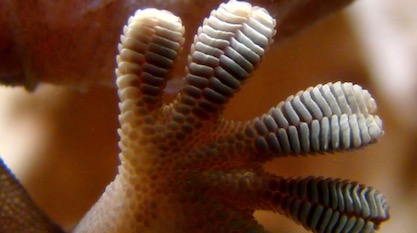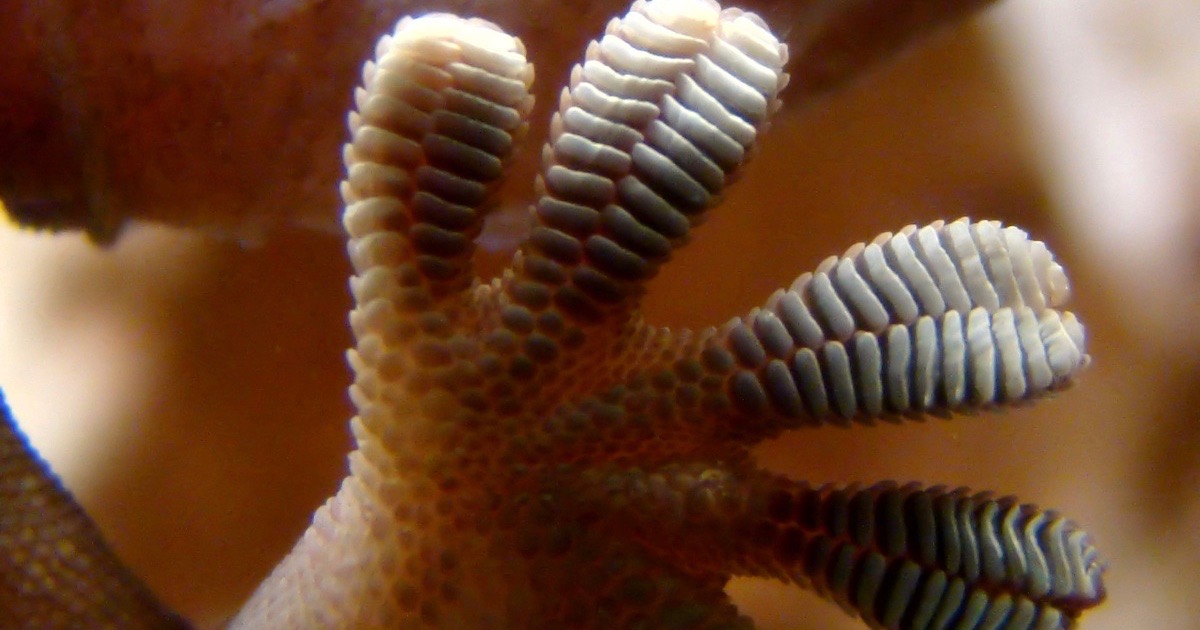 Intelligent Design
Intelligent Design
Is Biology Approaching the Threshold of Design Acceptance?


Slowly but surely, the biomimetics movement is having an effect on biology. The trend is global and cross-disciplinary, with almost every type of organism from virus to humpback whales, providing inspiration for design thinking. Many research projects into biomimetics also yield fruitful applications that improve human life. It’s a winning strategy for research, because it not only increases understanding of biological systems, but it’s fun! It is sublimely visual for students, who love watching spiders and ants and geckos and learning how they work.
Simultaneously, biomimetics fulfills one of the goals of Francis Bacon (1561-1626), the champion of systematic, methodical investigation into the natural world. In Aphorism 73 of Novum Organum, Bacon told how best to judge good natural philosophy, what we call science: “Of all signs there is none more certain or worthy than that of the fruits produced: for the fruits and effects are the sureties and vouchers, as it were, for the truth of philosophy.” Good fruits are pouring forth from the cornucopia of biologically inspired design. What has Darwinism done for the world lately?
Nature’s Designs Inspire Human Creativity
Five researchers from the Technical University of Cartagena, Spain, published a remarkably design-friendly paper about industrial design in PLOS ONE, with the title, “An agent-based approach for the application of nature’s forms to product conceptual design.” The paper falls just short of using the phrase “intelligent design,” which may still be a bridge too far for politically correct journals. Nevertheless, design, intelligence, and agency permeate this paper about “creative and bioinspired design process.” The authors’ goal is to improve creativity among technicians, engineers, and designers — and imitating nature’s designs is one of the best ways to do it.
A designer’s aim is to create shapes, materials, textures, colours and structures that improve our surroundings by producing utilitarian objects, machines and tools that satisfy our needs and comforts. Industrial design can be defined as a creative act related to the design of objects as it reconciles the functional aspect with the aesthetic function. Creativity, in turn, allows us to generate new ideas or concepts, and to associate already known ideas and concepts that can usually produce original solutions. When an industrial designer faces the challenge of finding a shape-based solution to design a product, resources or sources of inspiration may be needed to help find the most suitable form; one of these sources can be nature. [Emphasis added.]
With those principles in mind, they designed a learning tool to help industrial designers find natural shapes that were both functional and aesthetically pleasing. Their work expands on existing tools, such as Ask Nature, described as “a database of ‘biological patents’ in which a wide range of biological mechanisms and properties can be searched to solve technological problems.” Several “agent-based” or “multi-agent” programs have been in use for engineering students to collaborate in problem-solving. What these researchers bring to the industrial design community is a recognition of the aesthetic element for designing objects that are both functional and pleasing to the eye. Looking at nature’s solutions, they believe, enhances a designer’s creativity.
While this paper is not about explaining the origin of nature’s designs, it clearly recognizes the presence of design in nature as a source of inspiration. It also recognizes the essential role of the intelligent agent in design. Put those together, and you have intelligent design as a concept, even if you don’t say the phrase.
Count the design words in the paper:
- Design: 137
- Intelligent/Intelligence: 11 (six in the references)
- Agent/agency: 141
- Function: 15
- Creative/creativity: 27
- Information: 33 (including biological information, transfer of information)
- Biomimetics/biomimicry: 17 (twelve in the references)
- Complex/complexity: 41
Notably absent from the paper, conversely, are words about chance, randomness, or evolution.
Testing the Paradigm
Believing in the power of nature to inspire design, the authors created a program for increasing a designer’s creativity. The tool includes, at one stage in the design process, a biomimicry step, asking the student to examine natural shapes for their functionality and aesthetic aspects. They tested their new tool on 15 volunteer students in Computer-Aided Design degree programs to see if it enhanced their creativity. Individual case studies tell how the students approached their design challenge assignments, and how they performed. “In general, a satisfactory result was obtained in terms of management and everyone considered that the tool was useful and favoured the creative process in the conceptual design phase.” In conclusion, they say:
When designers face the challenge of shaping a product, some sources of inspiration are necessary to improve the creative process. Nature can be an inexhaustible resource of ideas, but given the vast numbers of possibilities available, it can be a complex task if certain concepts are searched for. To improve designers’ work, it is necessary to use support tools in the conceptual design phase that promote creativity thanks to visual stimuli. Thus, exposure to biological examples with the help of symbols and images can enhance the generation of novel ideas. Based on this concept, a new approach is proposed to establish cognitive relations between different shape parameters of nature. The beginning of the creative process starts with symbols that represent the most outstanding forms found in nature. Once several selections have been made, the tool offers a series of images from elements of nature that meet previously established shape-based conditions. This cognitive process enhances creativity by searching for the form that best suits the aesthetics of a product to be designed.
Scientific Revolutions in Stages
This paper is about industrial design more than biology per se, but consider the following aspects about the principles expressed that can encourage the intelligent design community:
- Design in nature wins respect for its functional and aesthetic value.
- Design in biology enhances the creative process.
- Design is an agent-mediated activity.
- The paper passed peer review with no mention of evolution but hundreds of design words.
- Natural design is a legitimate scientific research topic, with no religious assumptions.
Scientific revolutions often happen in stages. First, evidences accumulate that are at odds with the consensus paradigm. Next, more and more researchers feel comfortable using the new language of an alternative paradigm. Finally, a majority of scientists see no reason to hold onto the old paradigm, and the revolution is complete.
We might be seeing that middle ground, where design language is no longer seen as a threat in certain circles, such as biomimetic engineering. Once the logical connection becomes undeniable between what human agents do to design things that are both functional and beautiful, and what nature achieves with its huge showcase of inspiring designs, more scientists may begin to synchronize their thoughts: “We use our minds to design, so there must be a mind behind natural designs. And it must be a superior mind, since we cannot come close to its performance.”
Photo: A gecko displays its superbly designed toes, by Bjørn Christian Tørrissen [CC BY-SA 3.0 or GFDL], via Wikimedia Commons.
